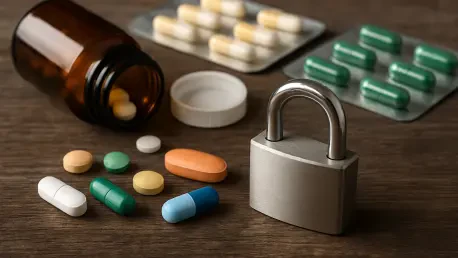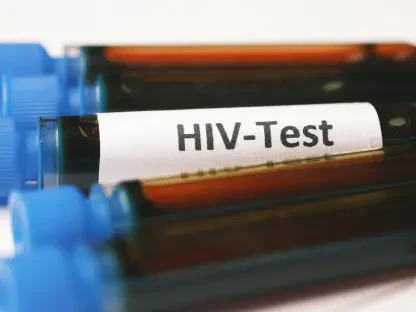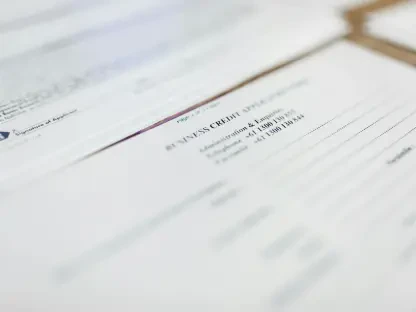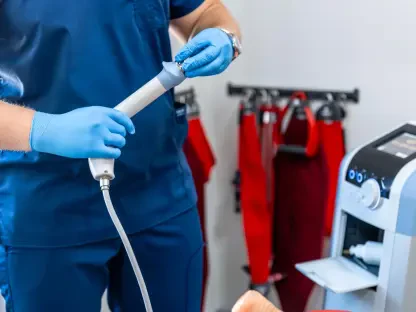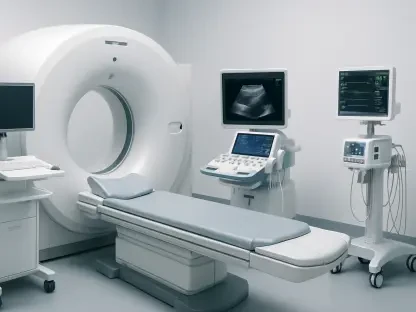In an era where patient safety remains a paramount concern in healthcare, the University of Arkansas for Medical Sciences (UAMS) has emerged as a trailblazer with its groundbreaking Good Catch Program, which focuses on intercepting potential medication errors before they harm patients. Spearheaded by Dr. Carlette Seng, a dedicated medication safety officer, this initiative zeroes in on identifying and resolving near-miss events—termed “good catches”—in time to prevent adverse outcomes. A “good catch” represents a near-miss event identified and resolved promptly, and UAMS has transformed this concept into a cornerstone of safety innovation. What began as a focused effort to enhance reporting of these incidents has yielded an astonishing 496% increase in good catch reports over a span of 21 months. This dramatic rise is more than a statistic; it signifies a profound shift in how healthcare staff perceive and address safety, uncovering hidden risks that might otherwise go unnoticed. The program’s success is rooted in inventive strategies and a steadfast commitment to fostering trust among medical professionals, creating a ripple effect that extends far beyond its initial intent.
The impact of this initiative at UAMS is not confined to near-miss reporting alone. An unexpected outcome has been a significant boost in overall medication event reporting, demonstrating how a targeted safety measure can influence an entire system. By cultivating an environment where staff feel empowered to report issues without fear of reprisal, UAMS has laid the groundwork for a replicable model that other health systems might adopt. This approach transcends mere numbers, focusing instead on the ultimate goal of saving lives through proactive and vigilant care. Simple yet effective tools, such as custom sticky notes and seamless integration into electronic health records (EHR), have made participation intuitive for staff, proving that impactful change does not always demand complex solutions. At the heart of this transformation lies a “just culture,” prioritizing learning over blame, which has strengthened the safety net for patients across the board.
Innovative Strategies Behind the Good Catch Program
Building a Foundation for Reporting
The foundation of the Good Catch Program at UAMS was built on making reporting both visible and engaging for pharmacy staff across various settings. Launched in early 2023, the first phase introduced a remarkably simple yet effective tool: logoed sticky notes. These were used to document near-miss incidents and were displayed on whiteboards placed in secure pharmacy work areas. The minimal information required on these notes ensured quick participation without compromising patient privacy. Positioned in high-traffic zones, the whiteboards served as a constant visual cue, reminding staff of their peers’ contributions and fostering a sense of shared responsibility. This approach not only made the act of reporting tangible but also created a communal spirit among the team. Each week, Dr. Seng and her colleagues gathered these notes, entering the data into a formal system for analysis and follow-up action, ensuring that no potential risk was overlooked in the pursuit of enhanced safety protocols.
Transitioning from a manual to a more integrated system marked the next critical step in the program’s evolution. By mid-2023, responding to feedback from frontline pharmacists, UAMS took a significant leap by embedding good catch reporting directly into the EHR system. This second phase introduced a voluntary “good catch outcome” option within pharmacist intervention documentation, allowing staff to log incidents seamlessly during their regular workflow. This eliminated the need to navigate a separate reporting platform, reducing barriers to participation. A dedicated medication safety pharmacist then reviewed and validated these entries to maintain accuracy and consistency. The integration streamlined the process, making it less time-consuming and more aligned with daily tasks. This shift not only increased the volume of reports but also ensured that the data captured was actionable, paving the way for system-wide improvements in medication safety practices at UAMS.
Enhancing Accessibility Through Technology
The integration of good catch reporting into the EHR system was a pivotal moment for UAMS, reflecting a broader trend in healthcare toward leveraging technology for safety. This move, initiated in mid-2023, allowed pharmacists to document near-miss events without disrupting their routine, embedding safety reporting into the fabric of their workday. The design of this feature was intentionally user-friendly, ensuring that even those less comfortable with digital tools could adapt quickly. By placing the reporting mechanism within a familiar platform, UAMS effectively minimized resistance to change, encouraging higher engagement across inpatient, outpatient, and other pharmacy settings. The result was a marked increase in the frequency and quality of reports, as staff could address potential issues in real time, enhancing the overall responsiveness of the safety framework.
Beyond the technical integration, the program’s emphasis on continuous improvement ensured that the system evolved based on user input. Regular reviews by medication safety pharmacists helped refine the EHR reporting tool, addressing any glitches or usability concerns promptly. This iterative process demonstrated a commitment to not just implementing a solution but optimizing it for maximum impact. Staff felt heard, knowing that their suggestions could shape the system they used daily. This feedback loop was instrumental in sustaining momentum, as it reinforced the idea that safety was a collective effort. Moreover, the data collected through this digital avenue provided richer insights into recurring issues, enabling UAMS to prioritize interventions that addressed the most pressing risks. The marriage of technology and human insight became a cornerstone of the program’s enduring success in bolstering medication safety.
Measuring the Impact on Medication Safety
Quantifiable Success and System Changes
The numbers behind the Good Catch Program at UAMS paint a striking picture of its transformative effect on medication safety. Before the initiative, the health system recorded an average of just 19.7 good catch reports per month. Over a 21-month period, this figure soared to an average of 117.3 reports monthly, marking a staggering 496% increase. This exponential growth highlights the effectiveness of the strategies deployed, from visible reminders to streamlined digital tools. More than just a boost in quantity, this surge reflects a heightened awareness among staff about the importance of identifying near-miss events. Each report represents a potential error averted, underscoring the program’s direct contribution to patient well-being. The data serves as a testament to how a structured, supportive approach can turn a latent safety concern into a proactive triumph across a complex healthcare environment.
Equally impressive is the actionable impact derived from these reports, with UAMS identifying 240 unique system opportunities for improvement in a recent eight-month span. Of these, 120 system changes were implemented, focusing on high-leverage interventions as recommended by the Institute for Safe Medication Practices (ISMP). Examples include updating order sets to prevent dangerous errors, such as the inappropriate use of certain medications during specific procedures. These changes targeted root causes, ensuring that risks were mitigated at a systemic level rather than through temporary fixes. The ability to translate reports into concrete improvements showcases the program’s practical value, moving beyond mere documentation to meaningful reform. By addressing critical gaps, UAMS has not only enhanced safety for current patients but also set a precedent for sustainable risk reduction in the future, solidifying its position as a leader in healthcare safety innovation.
Broader Implications of Data-Driven Safety
The data from the Good Catch Program offers more than just impressive statistics; it provides a roadmap for systemic change within healthcare. The sheer volume of reports—rising nearly fivefold—indicates a shift in mindset among staff, who now view near-miss events as opportunities for improvement rather than isolated incidents. This cultural evolution is critical, as it ensures that safety remains a priority even amidst the pressures of a busy medical environment. The detailed documentation of each good catch has allowed UAMS to pinpoint recurring patterns, such as errors in medication ordering or administration protocols. By analyzing these trends, the health system can allocate resources effectively, focusing on areas with the highest potential for harm. This data-driven approach elevates the program from a reactive measure to a strategic tool, equipping UAMS to stay ahead of potential risks in an ever-evolving field.
Furthermore, the implementation of system changes based on good catch reports underscores the importance of closing the feedback loop in safety initiatives. Each of the 120 adjustments made represents a direct response to frontline observations, ensuring that staff input translates into real-world impact. This process not only validates the effort of those reporting but also builds confidence in the system’s responsiveness. For instance, revising order sets to address high-risk medication interactions demonstrates a commitment to precision in care delivery. Such targeted interventions have a cascading effect, reducing the likelihood of errors across multiple departments. The program’s ability to harness data for tangible outcomes highlights a key lesson for other institutions: safety improvements must be both measurable and actionable to create lasting change. UAMS has shown that numbers, when paired with purpose, can redefine patient care standards.
Cultural Shift and Broader Outcomes
Fostering Trust and Transparency
One of the most profound outcomes of the Good Catch Program at UAMS has been its role in fostering a culture of trust and transparency among staff. An unexpected benefit emerged as overall medication event reporting—beyond just good catches—rose significantly, from 34 reports per month to 93 over a tracked period. This increase suggests that the initiative did more than encourage near-miss documentation; it reshaped how staff perceive error reporting as a whole. By emphasizing a “just culture,” where the focus lies on learning rather than blame, UAMS created an environment where pharmacists and other professionals felt safe to disclose issues. This openness is crucial in healthcare, where unreported errors can have dire consequences. The rise in reporting reflects a growing confidence that feedback will lead to constructive change, strengthening the system’s ability to protect patients from harm.
This cultural shift also highlights the power of trust as a catalyst for safety improvements. Staff at UAMS now view reporting not as a risk to their professional standing but as a vital contribution to collective well-being. The program’s design, which prioritizes anonymity in initial documentation and focuses on system flaws over individual mistakes, has been instrumental in breaking down barriers to disclosure. Regular communication from leadership, including Dr. Seng’s team, reinforces that every report is valued and acted upon. This consistent reinforcement builds a feedback loop where transparency begets trust, and trust encourages further transparency. As a result, UAMS has cultivated a workforce that is not only vigilant but also collaborative, working together to identify and mitigate risks. This transformation in workplace dynamics offers a blueprint for how cultural change can amplify the impact of technical safety measures in healthcare settings.
Endorsement from Experts and Future Potential
The Good Catch Program at UAMS has garnered well-deserved recognition from industry leaders, further validating its significance in the realm of medication safety. Christina Michalek, Director of Membership and Patient Safety Organization at ISMP, praised the initiative for its foundational role in enabling discussions about risks before harm occurs. Highlighting the implementation of 120 system changes over eight months—an average of 15 per month—she emphasized the program’s capacity to drive rapid, meaningful reform. Additionally, the use of low-cost, personalized tools like logoed sticky notes was lauded as an inspiring first step that made participation accessible and engaging for staff. Such endorsements from respected voices in patient safety underscore the program’s alignment with best practices, positioning UAMS as a model for proactive healthcare safety strategies that prioritize prevention over reaction.
Looking ahead, the success at UAMS points to significant potential for scalability and adaptation in other health systems. The blend of innovative yet simple strategies with a trust-based culture offers a framework that can be tailored to diverse medical environments. The program’s reliance on both analog and digital tools demonstrates flexibility, allowing institutions with varying resources to adopt similar measures. Moreover, the unexpected rise in overall error reporting suggests that fostering transparency can yield benefits beyond initial goals, enhancing safety comprehensively. As healthcare continues to grapple with complex challenges, initiatives like this one provide a beacon of hope, showing that small, intentional changes can produce outsized results. Reflecting on this journey, it’s clear that UAMS set a high standard by turning near-miss events into opportunities for growth, ensuring that patient safety remained at the forefront of every decision made.
